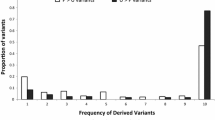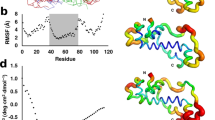Abstract
The best documented selection-based hypothesis to explain unequal usage of codons is based on the relative abundance of isoaccepting tRNAs. In unicellular organisms the most used codons are optimally translated by the most abundant tRNAs. The chemical bonding energies are affected by modification of the four traditional bases, in particular in the first anti-codon corresponding to the third codon position. One nearly universal modification is queuosine (Q) for guanine (G) in tRNAHis, tRNAAsp, tRNAAsn, and tRNATyr; this changes the optimal binding from codons ending in C to no preference or a slight preference for U-ending codons. Among species of Drosophila, codon usage is constant with the exception of the Drosophila willistoni lineage which has shifted primary usage from C-ending codons to U/T ending codons only for these four amino acids. In Drosophila melanogaster Q containing tRNAs only predominate in old adults. We asked the question whether in D. willistoni these Q containing tRNAs might predominate earlier in development. As a surrogate for levels of modification we studied the expression of the gene (tgt) coding for the enzyme that catalyzes the substitution of Q for G in different life stages of D. melanogaster, D. pseudoobscura, and D. willistoni. Unlike the other two species, the highest tgt expression in D. willistoni is in young females producing eggs. Because tRNAs laid down in eggs persist through the early stages of development, this implies that Q modification occurs earlier in development in D. willistoni than in other Drosophila.



Similar content being viewed by others
References
Alexondrov A, Chernyokov I, Gu W, Hiley SL, Hughes TR, Grayhack EJ, Phizicky EM (2006) Rapid tRNA decay can result from lack of nonessential modifications. Mol Cell 21:87–96
Anderson C, Carew EA, Powell JR (1993) Evolution of the Adh locus in the Drosophila willistoni group: the loss of an intron, and shift in codon usage. Mol Biol Evol 10:605–618
Bathia P, Taylor WR, Greenberg AH, Wright JA (1994) Comparison of glyceraldehydes-3-phosphate dehydrogenase and 28S-ribosomal RNA gene expression as RNA loading controls for Northern Blot analysis of cell lines of varying malignant potential. Anal Biochem 216:223–226
Borek E, Baliga BS, Gehrke CW, Kuo CW, Belman S, Troll W, Waalkes TP (1977) High turnover rate of transfer RNA in tumor tissue. Cancer Res 37:3362–3366
Bustin SA, Nolan T (2004) Pitfalls of quantitative real-time reverse-transcription polymerase chain reaction. J Biomol Tech 15:155–166
De Leeuw WJF, Slagboom PE, Vijg J (1989) Quantitative comparison of mRNA levels in mammalian tissues: 28S ribosomal RNA level as an accurate internal control. Nucleic Acids Res 17:10137–10138
Drosophila 12 Genomes Consortium (2007) Evolution of genes and genomes in the context of the Drosophila phylogeny. Nature 450:203–218
Engelke DR, Hopper AK (2006) Modified view of tRNA: stability amid sequence diversity. Mol Cell 21:144–145
Harada E, Nishimura S (1972) Possible anticodon sequences of tRNAHis, tRNAAsn, and tRNAAsp from Escherichia coli B. Universial presence of nulceoside Q in the first position of the anticodon of three transfer ribonulceic acids. Biochemistry 11:301–308
Higgs PF, Ran W (2008) Coevolution of codon usage and tRNA leads to alternative stable states of biased codon usage. Mol Biol Evol 25:2279–2291
Hosbach HA, Kubli E (1979) Transfer RNA in Aging Drosophila: II. Isoaccptor patterns. Mech Ageing Develop 10:141–149
Huggett J, Dheda K, Bustin S, Zumla A (2005) Real-time RT-PCR normalization; strategies and considerations. Genes Immun 6:279–284
Ikemura T (1981) Correlation between the abundance of Escherichia coli transfer RNAs and the occurrence of the respective codons in the protein genes: a proposal for a synonymous codon choice that is optimal for E. coli translational system. J Mol Biol 151:389–409
Ikemura T (1982) Correlation between the abundance of yeast transfer RNAs and the occurrence of the respective codons in protein genes: differences in synonymous codon choice patterns of yeast and Escherichia coli with reference to the abundance of isoaccepting transfer RNAs. J Mol Biol 158:573–597
Ikemura T (1992) Correlation between codon usage and tRNA content in microorganisms. In: Hatfield DL, Lee BJ, Pirtle RM (eds) Transfer RNA in protein synthesis. CRC Press, Boca Raton, pp 87–111
Karnahl U, Wasternack C (1992) Half-fife of cytoplasmic rRNA and tRNA of plastid rRNA of uridine nucleotides in heterotrophically and photoorganotrophically grown cells of Euglena gracilis and its apoplastic mutant W3Bul. Int J Biochem 24:493–497
Kim B-R, Nam H-Y, Kim S-U, Chang Y-J (2003) Normalization of reverse transcription quantitative-PCR with housekeeping genes in rice. Biotechnol Lett 25:1869–1872
Klemen F, Klambt D (1974) Half-life of sRNA from primary roots of Zea mays. A contribution to the cytokinin production. Physiol Plant 31:186–188
Meier F, Suter B, Grosjean H, Keith G, Kubli E (1985) Queuosine modification of the wobble base in tRNAHis influences in vivo decoding properties. EMBO J 4:823–836
Moriyama EN, Powell JR (1997) Codon usage bias and tRNA abundance in Drosophila. J Mol Evol 45:514–523
Morris RC, Elliott MS (2001) Queuosine modification of tRNA: a case for convergent evolution. Mol Genet Metabolism 74:147–159
Okada N, Noguchi S, Dasai H, Shindo-Okada N, Ohgi T, Goto T, Nishimura S (1979) Novel mechanism of posttranscriptional modification of tRNA. Insertion of bases of Q precursors into tRNA by a specific tRNA transglycosylase reaction. J Biol Chem 254:3067–3073
Owenby RK, Stulberg MP, Jacobson KB (1979) Alteration of the Q family of transfer RNAs in adult Drosophila melanogaster as a function of age, nutrition, and genotype. Mech Ageing Dev 11:91–103
Powell JR, Moriyama EN (1997) Evolution of codon usage bias in Drosophila. Proc Natl Acad Sci USA 94:7784–7790
Powell JR, Sezzi E, Moriyama EN, Gleason JM, Caccone A (2003) Analysis of a shift in codon usage in Drosophila. J Mol Evol 57:S214–S225
Shields DC, Sharp PM, Higgins DG, Wright F (1988) “Silent” sites in Drosophila are not neutral: evidence of selection among synonymous codons. Mol Biol Evol 5:704–716
Siard TJ, Jacobson KB, Farkas WR (1991) Queuine metabolism and cadmium toxicity in Drosophila melanogaster. Biofactor 3:41–47
The R Development Core Team (2008) R: A Language and Environment for Statistical Computing. Version 2.7.2
Urbonavicius J, Qian Q, Durand JMB, Hagervall RG, Björk GR (2001) Improvement of reading frame maintenance is a common function for several tRNA modifications. EMBO J 20:4863–4873
Vandesompele J, de Preter K, Pattyn F, Poppe B, van Roy N, de Paepe, Speleman F (2002) Accurate normalization of real-time quantitative RT-PCR data by geometric averaging of multiple internal control genes. Genome Biol 3:34
Vicario S, Moriyama EN, Powell JR (2007) Codon usage in twelve species of Drosophila. BMC Evol Biol 7:226
Vicario S, Mason CE, White KP, Powell JR (2008) Developmental stage and level of codon usage bias in Drososophila. Mol Biol Evol 25:2269–2277
White BN, Tener GN, Holden J, Suzuki DT (1973) Analysis of tRNAs during the development of Drosophila. Develop Biol 33:185–195
Acknowledgments
We are thankful to Aditya Paul for helping with the RNA quantification, to Julien Claude for helping with the statistical analyses, and to Dieter Söll and Erick Kubli for discussion of Drosophila tRNAs. Two reviewers made helpful comments. NIH grant RO1 GM077533 (to JRP) provided financial support for this study. AP was supported by a Marie Curie Outgoing International Fellowship (Contract No. MOIF-CT-2006-021357). This is the publication #ISEM 2010-010 of YC.
Author information
Authors and Affiliations
Corresponding author
Additional information
Ylenia Chiari, Kirstin Dion, and James Colborn contributed equally.
Rights and permissions
About this article
Cite this article
Chiari, Y., Dion, K., Colborn, J. et al. On the Possible Role of tRNA Base Modifications in the Evolution of Codon Usage: Queuosine and Drosophila . J Mol Evol 70, 339–345 (2010). https://doi.org/10.1007/s00239-010-9329-z
Received:
Accepted:
Published:
Issue Date:
DOI: https://doi.org/10.1007/s00239-010-9329-z




